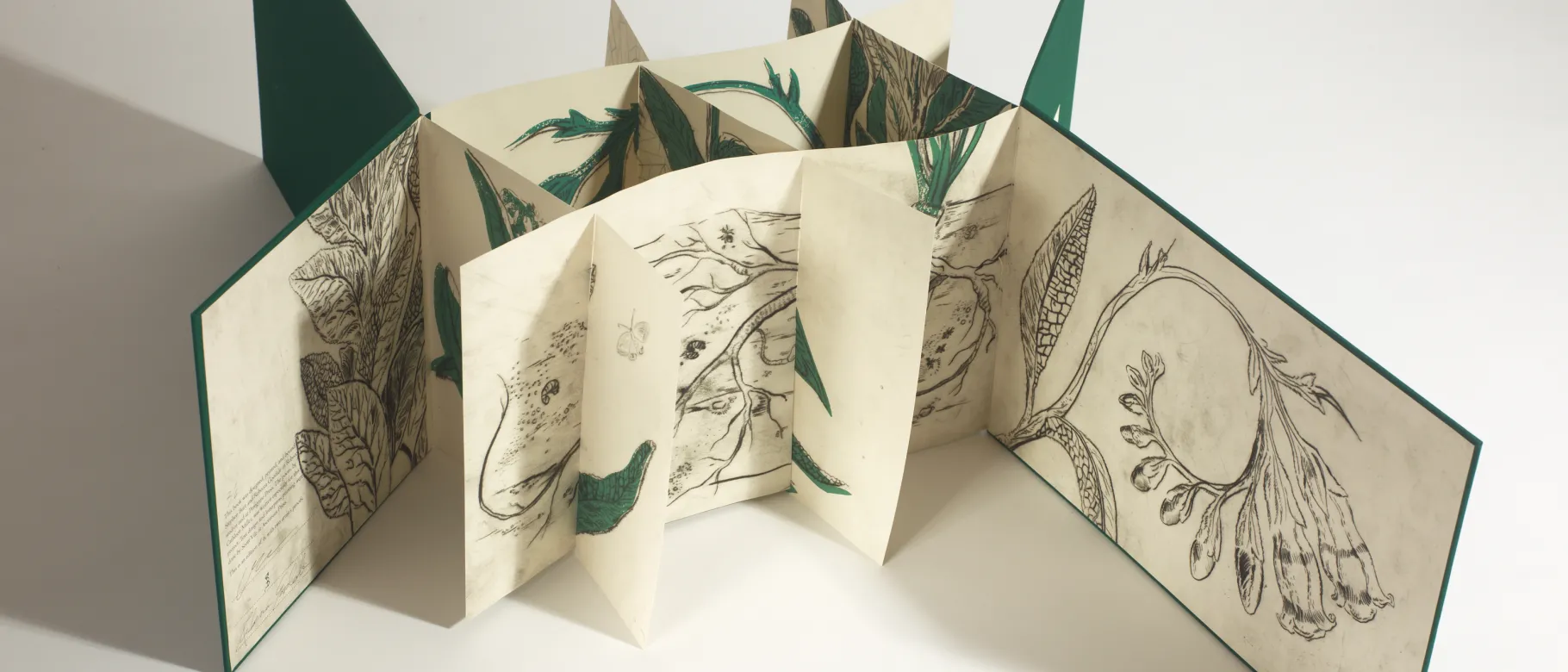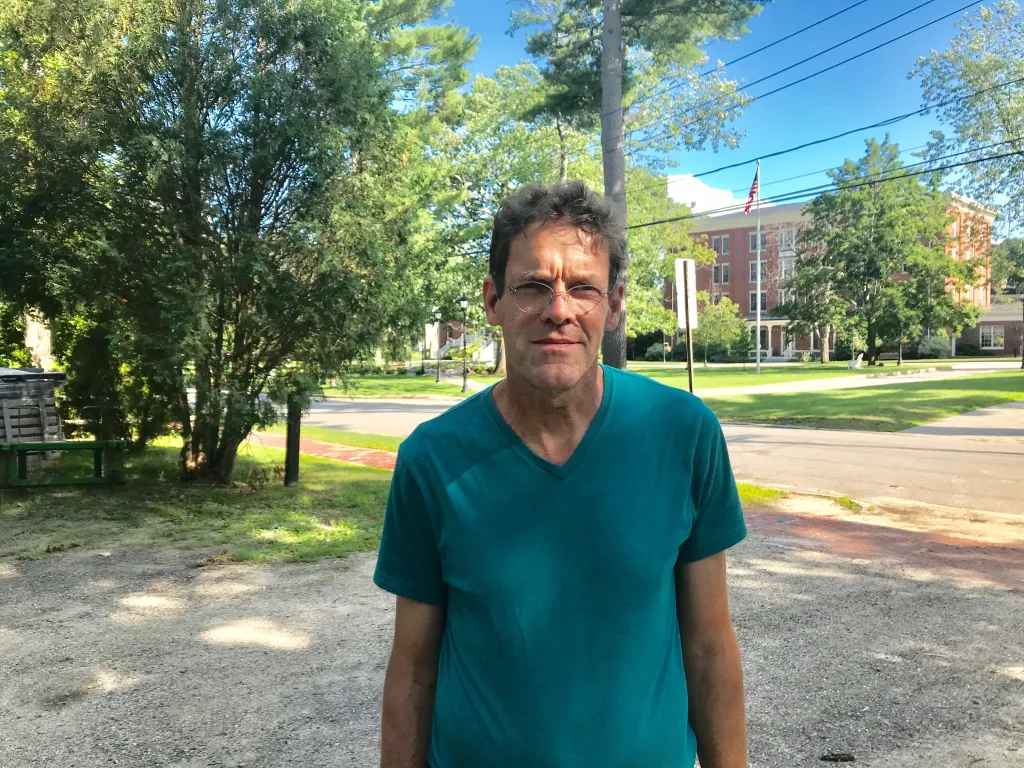UNE art thriving on and off campus

It has been a busy summer for faculty in the University of New England Department of Creative and Fine Arts. Stephen Burt, B.F.A., M.F.A., department chair and associate professor, and Andy Rosen, adjunct professor in the department, both had art work on display off campus this summer.
A collaborative artist book project by Burt and Rebecca Goodale was exhibited at the Maine Media Workshop Gallery in Rockport. His print “Staghorn Beetle” was included in a group show by the printmaking cooperative Peregrine Press at the Green Lion Gallery in Bath, Maine.
Rosen recently completed a public art display depicting a pair of deer walking on stilts among an abandoned piling field in Casco Bay. It is now showcased next to the Ocean Gateway terminal in Portland.
Additionally, the entire art faculty have all been engaged in creating work for the biannual faculty exhibit in the art gallery on the Portland Campus. The exhibit is open now through October with an artist reception on September 15, from 5:30 to 7:30 p.m.
With UNE faculty contributing so much to the art scene, UNE News took the opportunity to sit down with Stephen Burt to talk about what it all means for the Art program at UNE.
UNE News: “How would you describe the Department of Arts at UNE?”
Stephen Burt: “I would say we’re thriving. We have more than 400 students a semester with 14 majors and about 30 minors. Our classes in general are enrolled at 15 students or fewer because you need a lot of hands on instruction. We have a really broad variety of classes, including all the traditional classes such as drawing, painting, ceramics and sculpture. We also have a boat building class taught off campus at Biddeford High School, a 3D printing class that’s more than 5 years old, but a lot of people don’t know about it, and we have a digital animation class.”
UNE News: “Do you have a rule of thumb about your approach to teaching art?”
Burt: “I make it a policy not to train students in any one specific style. I want to train them how to think and to give them a basic introduction in the use of materials. Then it’s up to them to apply them. Anybody who comes to our classes is going to learn a lot about themselves, about the artistic process, and most importantly about problem solving in general.”
UNE News: “How so?”
Burt: “In many majors you have only one or two ways to answer a problem. Art doesn’t provide you with any one solution; there are literally thousands of solutions, or a million different solutions, any one of which could be excellent. The field is wide open, and that gives students a comfort level with ambiguity. That’s really important. It helps fuel their creativity, and, in a larger sense, it helps them with problem solving in general because there isn’t one solution they have to learn. They have to think their way through solving a problem.”
UNE News: “Is there anything new you’re working on for the upcoming semester?”
Burt: “We’re making an effort to get more student works out into the campus centers. The plan is to integrate more student work into those locations this fall and spring. Student lounges, study areas, maybe in some offices. It’s a long-term plan that we’d like to see more of.”
UNE News: “You had an exhibit on display at the Maine Media Workshop. Do you take experiences from your own work and pass it on to students?”
Burt: “I wanted to learn more about how artist Rebecca Goodale did silkscreen in her projects. I approached her about observing her process, and she said, 'Why do that when we can make something? Let’s do a project together.' It’s what I like to share with my students. Let’s do something, see what happens and find a solution. That’s what we did on this project. When we started out, we had no idea what was going to happen.”
UNE News: “Any final words of wisdom for students in the Art program?”
Burt: “To me there is no bad art; there’s just art that you need to make. It’s all sort of a signpost to lead you to the next piece or place. Even if you feel it’s a disaster, it’s a necessary part of the learning process”
